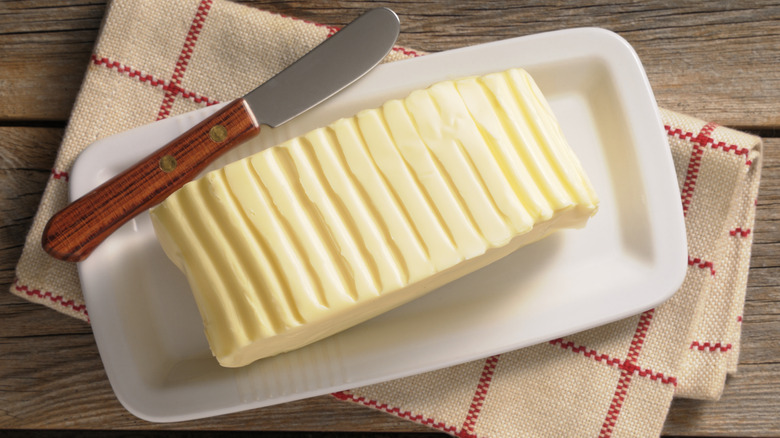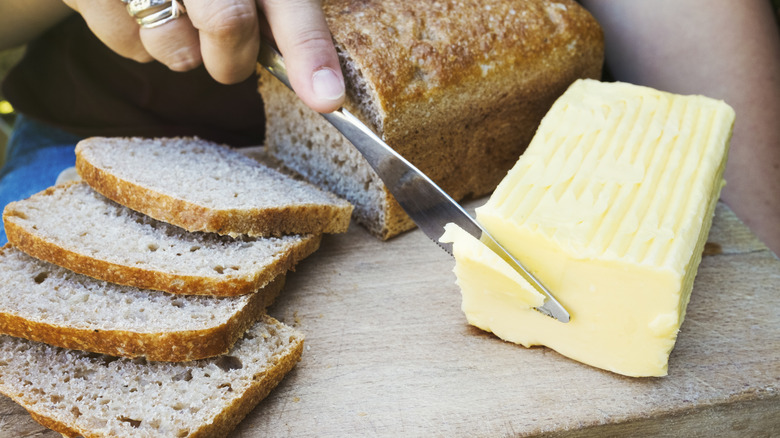What's The Actual Difference Between Cultured And Regular Butter?
Like many basic ingredients, butter comes in many different varieties. One type you've likely seen mentioned is cultured butter, a particularly interesting variation. The cream it's made from has been treated with cultures and allowed to ferment before being churned into its final product. That gives the final result some acidity, which you can detect in its final flavor. Some people describe it as cheesy or tangy, but the one thing that people do agree on is that it's more intense in flavor than regular butter.
If you're interested in buying some for your own cooking purposes, it's relatively easy to get, as it's frequently sold in most grocery stores. Just be sure to check the label. And though there's no standard amount of butterfat required in cultured butter, it usually ends up on the higher side, typically around 82% butterfat. Higher butterfat kinds of butter tend to put them (and therefore cultured butter) in a premium tier of products.
How to use cultured butter
You can, of course, just spread cultured butter on toast or plain bread and appreciate it that way. Then, you can go the route of serving it with radishes and a sprinkling of sea salt. But many people (including us) recommend using cultured butter for baked goods because it has a stronger, more concentrated flavor. Not only is it good in things like biscuits and pound cakes, but you can use it in places where butter's a star ingredient, such as cookies and shortbread.
Cooking and lifestyle maven Ina Garten is a pretty big fan of cultured butter as well; she likes a version called Beurre de Baratte, which is definitely one of life's finer things, considering a half-pound of it can cost you at least $12. You can also sometimes find cultured butter as part of bread service at higher-end restaurants because it's an elevated take on the good old combination of bread and butter. Not only is the butter cultured, but use it, and it might make you feel that way, too.

